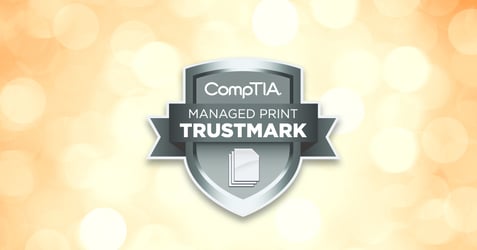One of the most potent tools for achieving growth and efficiency in your organization is process improvement planning. Whether you're a small business trying to find your niche or a larger organization trying to stay ahead of the curve, harnessing the power of thoughtful process improvement can be transformative. In addition to fixing areas of your business that are broken, process improvement planning also ongoingly refines operations to enhance productivity, quality, and customer satisfaction. In this blog, we'll take a closer look at process improvement planning and outline key steps to get started on this journey towards operational efficiency.
Understanding process improvement planning
Process improvement planning involves systematically evaluating existing workflows, identifying inefficiencies, and implementing strategic changes to enhance performance. It's a proactive approach that fosters a culture of innovation, collaboration, and continuous learning within an organization. Instead of being reactive to problems as they arise, process improvement planning empowers teams to anticipate challenges, identify opportunities, and adapt to evolving demands effectively.
The need for process improvement planning arises from various factors such as operational inefficiencies, changing market conditions, technological advancements, or evolving customer expectations. By applying this approach strategically across all aspects of the organization – from production to customer service – businesses can stay competitive in an evolving market.
The benefits of process improvement planning
- Enhanced efficiency. By streamlining workflows and eliminating bottlenecks, process improvement drives operational efficiency. Tasks are completed faster, resources are utilized optimally, and waste is minimized, leading to cost savings and improved profitability.
- Consistent quality. Standardizing processes and implementing best practices ensures consistent quality in products and services. This not only enhances customer satisfaction but also strengthens brand reputation and loyalty.
- Agility and adaptability. Process improvement fosters agility by making organizations more responsive to changes in market conditions, customer preferences, and technological advancements.
- Empowered employees. Engaging employees in the process improvement journey empowers them to contribute their insights, identify areas for improvement, and buy in to the process changes. This boosts morale, fosters a culture of accountability, and can improve employee retention.
- Innovation catalyst. Process improvement planning encourages innovation by creating an environment where ideation and risk-taking are valued. By continuously challenging the way things have always been done, organizations can uncover new opportunities for growth and competitive advantage.
Seven key steps in process improvement planning
1. Identify goals and objectives
The first step in process improvement planning is to define clear, measurable goals aligned with the organization's strategic objectives. Whether it's improving efficiency, reducing costs, enhancing quality, or increasing customer satisfaction, articulating specific outcomes provides a roadmap for the improvement efforts.
2. Process mapping
Once the goals are established, the next step is to map out the existing processes involved in achieving those goals. This involves documenting each step in the workflow, identifying inputs, outputs, stakeholders, and potential areas of inefficiency or waste.
3. Analyze and identify opportunities
With a clear understanding of the current state, the focus shifts to analyzing process performance and identifying opportunities for improvement. This may involve gathering data, conducting root cause analysis, and soliciting feedback from key stakeholders to identify areas where changes can yield significant benefits.
4. Develop improvement strategies
Based on the analysis, develop strategies and action plans to address identified opportunities. This may include redesigning workflows, implementing new technologies, updating policies and procedures, or providing training and development for employees.
5. Implement changes
Once the improvement strategies are formulated, it's time to put them into action. This requires effective change management, clear communication, and engagement with stakeholders to ensure buy-in and minimize resistance to change. Ensure all areas of your organization that are impacted by the process change have been involved in the planning and implementation processes.
6. Monitor and measure progress
Continuous monitoring and measurement are essential to gauge the effectiveness of the improvement efforts. Establish key performance indicators (KPIs) to track progress towards the defined goals and use data-driven insights to make informed decisions and course corrections as needed.
7. Refine and improve
Process improvement is an ongoing journey, not a one-time event. Continuously evaluate improvement strategies, solicit feedback from stakeholders, and remain open to new ideas and opportunities for optimization.
The role of business process improvement consulting
Business process improvement consulting plays a crucial role in identifying and managing projects to improve efficiency. Consultants bring expertise in analyzing processes and recognizing areas for improvement. They use proven methodologies such as Lean Six Sigma to analyze workflows and pinpoint inefficiencies.
Consultants also provide guidance on implementing changes effectively. They understand that change can be challenging for organizations and employees alike. They can help your organization embrace the change by facilitating communication between different stakeholders and ensuring that everyone understands the benefits of the new processes.
Business consulting services also offer a collaborative resource for your organization even after changes have been implemented. They monitor the results of the new processes with you and can suggest adjustments based on feedback or changes in business conditions.
EO Johnson’s process improvement consultants bring in-depth knowledge of proven methodologies and change management strategies to help you successfully implement process improvements that lead to significant benefits. Let’s talk about what isn’t working in your organization and how we can help.







